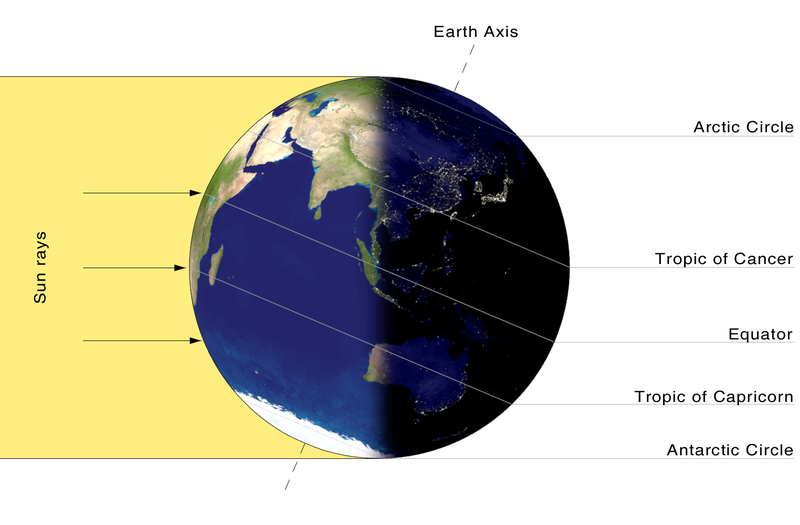Winter Solstice
The time around December 21 or 22 is a pivotal day for our planet and its relationship with the sun. It is one of two solstices, which are days when the tilt of the Earth's axis is most inclined toward or away from the Sun, causing the Sun's apparent position in the sky to reach its northernmost or southernmost extreme. Winter solstice is the most common name of this event that occurs in December. However, Winter can be ambiguous since seasons of the northern hemisphere and southern hemisphere are opposites, and the summer solstice of one hemisphere is the winter solstice of the other. Winter solstice is also referred to as Southern Solstice or December Solstice.
During the Winter Solstice, there are 24 hours of daylight south of the Antarctic Circle (66.5° south of the equator) and 24 hours of darkness north of the Arctic Circle (66.5° north of the equator). The sun's rays are directly overhead along the Tropic of Capricorn (the latitude line at 23.5° south, passing through Brazil, South Africa, and Australia). 
Why do we have a Winter Solstice? The Earth spins around its axis, an imaginary line going right through the planet between the north and south poles. The axis is tilted somewhat off the plane of the earth's revolution around the sun and always points to the same point in the universe. The tilt of the axis is 23.5 degrees. Thanks to this tilt, we enjoy the four seasons.
And what about the Earth's distance from the Sun? Does it effect our seasons? The distance to the Sun varies, because the Earth's orbit around the Sun isn't an exact circle. This variation does make a contribution to the Earth's seasons, but is small compared with the effects of exposure because of Earth's tilt. We are closest to the Sun -- would you believe it? -- in the cold wintertime, around January 3-5.
Worldwide, interpretation of the Winter Solstice has varied from culture to culture, but most cultures have held a recognition of rebirth, involving holidays, festivals, gatherings, rituals or other celebrations around that time.
To learn more check out the following resources:
Books
- The winter solstice : the sacred traditions of Christmas by John Matthews with contributions from Caitlin Matthews
- The return of the light : twelve tales from around the world for the winter solstice by Carolyn McVickar Edwards ; illustrations by Kathleen Edwards
- Yule : a celebration of light and warmth by Dorothy Morrison.
Websites
- PhysicalGeography.net - Provides animation of the Winter Solstice
- National Geographic News - Winter Solstice Monday: Facts on First Day of Winter
Find this article at http://thelibrary.org/blogs/article.cfm?aid=642&lid=52
